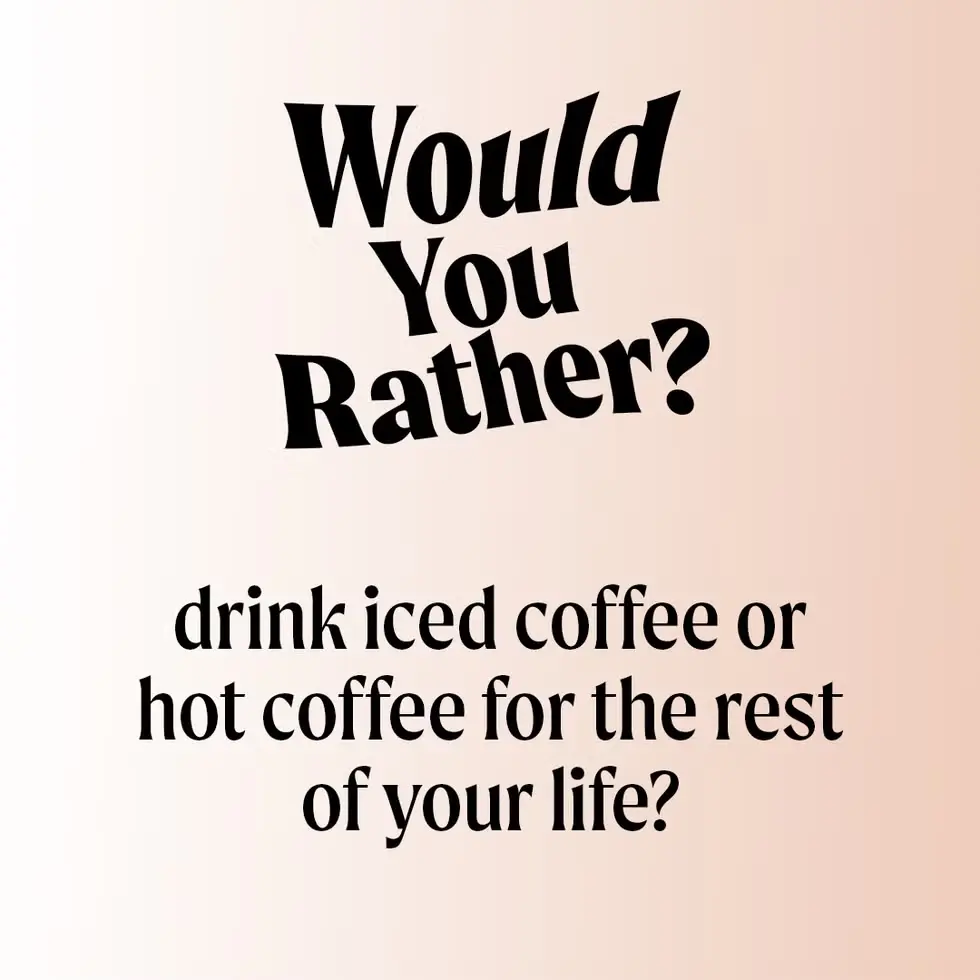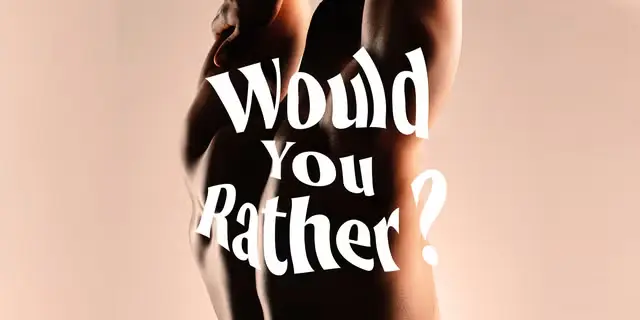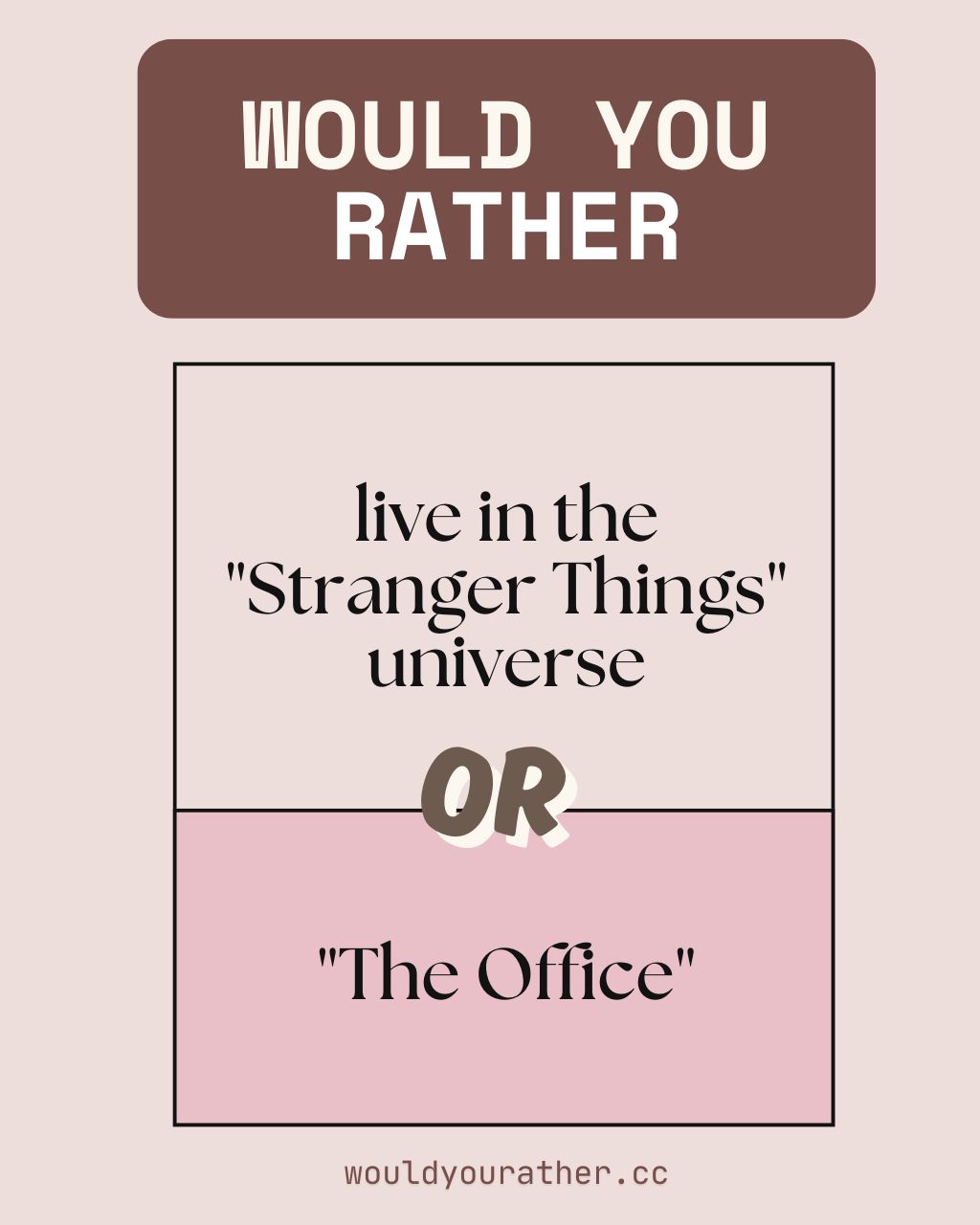In the fast-paced world of social media, where attention spans are fleeting and trends come and go in a heartbeat, one type of content consistently captures the imagination of millions: “Would You Rather” questions. These simple, often quirky dilemmas—posing two choices like “Would you rather fly or be invisible?” or “Would you rather eat pizza forever or tacos?”—have an uncanny ability to go viral, sparking debates, laughter, and endless engagement across platforms like X, TikTok, and Instagram. But what is it about these questions that makes them so irresistible? Why do they spread like wildfire, drawing in everyone from casual scrollers to dedicated content creators? The answer lies in the fascinating psychology behind human behavior, social interaction, and digital culture. In this 2000+ word exploration, we’ll dive into the psychological mechanisms that fuel the viral success of “Would You Rather” questions, uncover the benefits they offer users and creators, and explain why they’re a powerful tool for connection in today’s hyper-connected world.
The Allure of Choice: Tapping into Decision-Making
At the core of every “Would You Rather” question is a choice—a binary dilemma that forces you to pick one option over another. This simple structure taps into a fundamental aspect of human psychology: our love for making decisions. According to research in cognitive psychology, decision-making activates the brain’s prefrontal cortex, engaging areas responsible for problem-solving, reasoning, and self-expression. When faced with a “Would You Rather” question, we’re not just choosing between two silly scenarios; we’re exercising our cognitive muscles, weighing pros and cons, and asserting our individuality.
Why It Works
- Cognitive Engagement: Even seemingly trivial choices, like “Would you rather have a pet dragon or a pet unicorn?” require mental effort. This engagement keeps users hooked, as they ponder the implications of each option and justify their pick.
- Low Stakes, High Fun: Unlike real-life decisions (e.g., choosing a career or a partner), “Would You Rather” questions are low-risk. You can’t “fail” at choosing between superpowers or food preferences, which makes the process playful and stress-free.
- Self-Expression: Choosing an option reveals something about your personality, values, or sense of humor. When you post your answer on X or comment on a friend’s poll, you’re sharing a piece of yourself, which feels rewarding and affirming.
Benefits for Users
For social media users, engaging with these questions offers a sense of agency and identity. They get to express their preferences in a fun, public way, contributing to a broader conversation. For creators, these questions are goldmines for engagement, as they prompt followers to comment, repost, or create their own spin-offs, amplifying reach and interaction.
The Social Glue: Fostering Connection and Debate
Humans are inherently social creatures, wired to connect, compare, and communicate. “Would You Rather” questions are viral because they serve as social glue, bringing people together through shared laughter, debates, and friendly arguments. On platforms like X, where conversations thrive on quick, witty exchanges, these questions are perfect catalysts for interaction.
Why It Works
- Universal Appeal: The simplicity of “Would You Rather” questions makes them accessible to everyone, regardless of age, culture, or background. A question like “Would you rather lose your phone or your wallet?” resonates universally, as most people can relate to the stakes.
- Conversation Starters: These questions are natural icebreakers. They invite responses without requiring deep personal disclosures, making them ideal for sparking discussions in comment sections or group chats.
- Tribal Instincts: When users choose a side, they align with a “team” of like-minded people. This taps into our tribal instincts, creating a sense of belonging. For example, choosing “pizza” over “tacos” might lead to playful banter with the opposing side, reinforcing social bonds.
- Humor and Absurdity: Many viral “Would You Rather” questions are deliberately absurd (e.g., “Would you rather sweat glitter or sneeze confetti?”). Humor triggers dopamine release in the brain, making users feel good and eager to share the joy with others.
Benefits for Users
For individuals, these questions provide a low-effort way to connect with friends, followers, or strangers. They create moments of shared amusement, like when a viral X post asking “Would you rather fight one horse-sized duck or 100 duck-sized horses?” prompts thousands of replies. For creators, the social nature of these questions drives engagement metrics—likes, reposts, and comments—boosting visibility and follower growth. Brands and influencers can also use themed questions (e.g., tied to a product or campaign) to build community and loyalty.
The Dopamine Hit: Why We Can’t Stop Engaging
Social media thrives on dopamine, the neurotransmitter associated with pleasure and reward. “Would You Rather” questions are expertly designed to deliver quick, satisfying hits of dopamine, making them addictive and shareable.
Why It Works
- Instant Gratification: Answering a question takes seconds, providing an immediate sense of accomplishment. Posting your choice and seeing others react (e.g., likes or replies) amplifies this reward.
- Curiosity and Surprise: Viral questions often have an element of surprise or novelty, like “Would you rather have a rewind button for life or a fast-forward button?” Curiosity drives users to read, answer, and share, eager to see how others respond.
- Gamification: The game-like structure of “Would You Rather” makes it feel like a challenge. Users want to “play” by picking a side, comparing answers, and debating, which keeps them coming back for more.
- FOMO (Fear of Missing Out): When a question trends on X, users feel compelled to join the conversation to stay relevant. Missing out on a viral debate feels like missing a cultural moment, driving participation.
Benefits for Users
For users, the dopamine-driven engagement is a mood booster, offering a quick escape from daily stress. It’s a fun, bite-sized way to interact with the digital world. For creators, this addictive quality ensures high interaction rates, as users are drawn to answer, share, and tag friends. A single viral question can lead to thousands of impressions, making it a powerful tool for building an online presence.
The Power of Relatability and Personalization
One reason “Would You Rather” questions go viral is their ability to feel personal yet universal. They tap into shared human experiences—food preferences, tech struggles, or dreams of adventure—while allowing users to project their unique perspectives onto the answers.
Why It Works
- Relatability: Questions like “Would you rather have bad Wi-Fi or bad coffee?” hit home because they reflect everyday frustrations. Users feel seen and understood, which encourages sharing.
- Personalization: While the questions are broad, the act of choosing makes them feel tailored. Your answer to “Would you rather be famous or rich?” reflects your values, making the experience deeply personal.
- Cultural Relevance: Viral questions often tie into current events, memes, or trends. For example, during a major movie release, a question like “Would you rather be a Jedi or an Avenger?” capitalizes on pop culture buzz, making it timely and shareable.
- Emotional Resonance: Some questions evoke strong emotions, like nostalgia (“Would you rather live in the ‘90s or now?”) or aspiration (“Would you rather travel the world or own a mansion?”). These emotional hooks drive engagement.
Benefits for Users
Users enjoy the chance to reflect on their preferences and share them with a community, fostering a sense of identity and connection. For creators, relatable questions are a shortcut to virality, as they resonate with wide audiences. Tailoring questions to your niche (e.g., tech, food, or gaming for your site https://wouldurather.cc) can also attract loyal followers who feel a personal connection to your content.
The Role of Humor and Absurdity
Humor is a universal language, and “Would You Rather” questions often lean into absurdity to maximize laughs. Questions like “Would you rather have a pet dinosaur or a pet robot?” or “Would you rather sneeze glitter or fart rainbows?” are inherently funny, making them perfect for viral spread.
Why It Works
- Laughter as a Social Bond: Humor strengthens social ties, as shared laughter creates a sense of camaraderie. When users laugh at a ridiculous question, they’re eager to share it with friends, amplifying its reach.
- Memorable Impact: Absurd questions stick in the mind because they’re unexpected. This memorability drives reposts and quote-tweets, as users want to spread the hilarity.
- Escapism: In a world full of serious news, silly questions offer a lighthearted escape. They provide a mental break, making users more likely to engage and share.
- Viral Potential: Humor travels fast on X, where witty one-liners and funny polls dominate. A clever “Would You Rather” question can become a meme, shared across platforms.
Benefits for Users
For users, the humor of these questions is a mood-lifter, offering a quick laugh during a busy day. It’s a chance to bond over silliness, whether debating with friends or strangers. For creators, humorous questions are a reliable way to boost engagement, as they’re more likely to be reposted or turned into viral threads. They also align well with X’s playful, irreverent tone.
The Social Comparison Effect
Humans are naturally inclined to compare themselves to others, and “Would You Rather” questions capitalize on this by inviting users to see how their choices stack up. On X, where polls and reply threads make comparisons visible, this social comparison effect fuels virality.
Why It Works
- Curiosity About Others: Users are curious to see if their choice aligns with the majority or stands out. A question like “Would you rather have no Wi-Fi or no coffee?” prompts users to check the poll results or read replies, driving engagement.
- Validation and Debate: When users see others share their choice, they feel validated. Conversely, differing opinions spark debates, as users defend their picks with passion or humor.
- Group Dynamics: On X, communities form around shared interests (e.g., gaming, food, or tech). “Would You Rather” questions tailored to these niches (e.g., “Would you rather play Fortnite or Minecraft forever?”) strengthen group identity, encouraging participation.
- Influencer Amplification: When influencers or popular X accounts post these questions, their followers jump in to align with or challenge their choices, creating a ripple effect.
Benefits for Users
Users enjoy the thrill of seeing how their choices compare, whether it’s bragging about being in the majority or defending a quirky pick. It’s a fun way to feel connected to a larger community. For creators, the comparison effect drives prolonged engagement, as users keep checking back for new replies or poll updates. This makes “Would You Rather” questions a powerful tool for sustaining conversations.
The Viral Mechanics of X
X’s unique platform dynamics play a huge role in why “Would You Rather” questions go viral. Its real-time, conversational nature and emphasis on brevity make it the perfect breeding ground for quick-hitting, engaging content.
Why It Works
- Brevity and Clarity: X’s character limit forces questions to be short and punchy, ideal for “Would You Rather” format. Users can read, answer, and repost in seconds, fueling rapid spread.
- Polls and Interactivity: X’s poll feature is tailor-made for these questions, allowing users to vote and see results instantly. Polls like “Would you rather have wings or a tail?” can garner thousands of votes, boosting visibility.
- Threads and Quote-Tweets: Users often create threads with multiple questions or quote-tweet their answers with commentary, extending the content’s lifespan and reach.
- Algorithm Boost: X’s algorithm favors content with high engagement (likes, replies, reposts). “Would You Rather” questions naturally generate these metrics, making them more likely to appear in users’ feeds or trends.
- Community Engagement: X’s culture of niche communities (e.g., #GamingTwitter, #FoodieTwitter) means themed questions can target specific audiences, increasing relevance and shareability.
Benefits for Users
For users, X’s mechanics make engaging with these questions seamless and rewarding. They can join a global conversation with a single tap, feeling part of something bigger. For creators, X’s viral potential means a well-crafted question can reach thousands or even millions, driving traffic to profiles, websites (like https://wouldurather.cc), or related content. It’s a low-effort, high-impact strategy for growth.
Emotional Triggers and Shareability
Viral content often hinges on emotional triggers—joy, surprise, nostalgia, or even mild controversy. “Would You Rather” questions excel at hitting these triggers, making them highly shareable.
Why It Works
- Joy and Amusement: Funny or whimsical questions (e.g., “Would you rather have a talking pet or a flying car?”) evoke joy, prompting users to share the positivity.
- Surprise and Novelty: Unexpected twists, like “Would you rather have a rewind button or a pause button for life?” catch users off guard, making them eager to share the cleverness.
- Nostalgia: Questions tied to childhood or past decades (e.g., “Would you rather play a Game Boy or a Tamagotchi?”) trigger warm memories, encouraging shares among users who relate.
- Mild Controversy: Questions with divisive choices (e.g., “Would you rather give up pizza or burgers?”) spark friendly arguments, driving engagement as users rally for their side.
Benefits for Users
Users get an emotional boost from engaging with content that makes them laugh, reminisce, or debate. Sharing these questions feels like spreading joy or starting a fun fight. For creators, emotional triggers ensure content resonates deeply, increasing the likelihood of virality. A single question can become a cultural touchpoint, referenced in memes or discussions for days.
The Creator’s Advantage: Why Content Creators Love Them
For content creators, influencers, and brands, “Would You Rather” questions are a strategic tool for building audiences and driving engagement. Their versatility and ease of creation make them a go-to for viral content.
Why It Works
- Low Effort, High Reward: Crafting a question takes minutes but can yield thousands of interactions. This efficiency is ideal for busy creators.
- Customizability: Questions can be tailored to any niche, audience, or campaign. For example, a food blogger might ask, “Would you rather eat sushi or tacos forever?” while a tech brand might ask, “Would you rather have a smartwatch or a VR headset?”
- Evergreen Appeal: Unlike time-sensitive news, these questions remain relevant, making them reusable or recyclable in different formats (e.g., polls, videos, or blog posts).
- Cross-Platform Potential: A viral X question can be repurposed for TikTok videos, Instagram stories, or blog content (e.g., on https://wouldurather.cc), maximizing reach.
- Audience Insights: The answers reveal audience preferences, helping creators tailor future content. For instance, a poll showing 80% prefer “pizza” over “tacos” might inspire pizza-themed posts.
Benefits for Creators
Creators gain visibility, followers, and data from these questions. A viral post can drive traffic to websites, increase brand awareness, or establish expertise in a niche. For users, interacting with creators’ questions feels like a personal connection, fostering loyalty and community.
Practical Benefits for Everyday Users
Beyond creators, everyday users reap psychological and social benefits from engaging with “Would You Rather” questions, making them a staple of digital culture.
Benefits
- Mental Stimulation: Answering questions keeps the brain active, offering a fun form of mental exercise.
- Social Connection: Commenting or reposting builds bridges with friends or strangers, combating loneliness in a digital age.
- Creative Outlet: Crafting your own questions or witty replies lets users flex their creativity, boosting confidence.
- Stress Relief: The humor and lightheartedness provide a break from serious content, reducing anxiety.
- Community Building: Joining niche discussions (e.g., #WouldYouRather on X) creates a sense of belonging, especially for users with specific interests.
Conclusion: The Viral Magic of “Would You Rather”
The viral success of “Would You Rather” questions isn’t random—it’s a masterclass in human psychology. By tapping into our love for choice, social connection, humor, and emotional triggers, these questions captivate users and creators alike. They engage our brains, spark debates, deliver dopamine, and foster community, all while fitting perfectly into X’s fast-paced, interactive ecosystem. For users, they offer fun, connection, and self-expression. For creators, they’re a low-effort, high-impact tool for virality, engagement, and audience growth.



